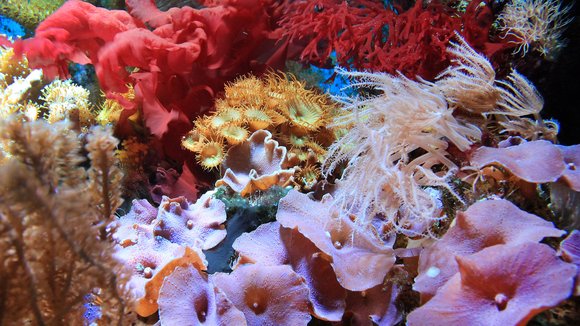
Corals live with micro-algae. They are so mutually dependent that they cannot survive apart.
Strong together
Algae and corals benefit from working together (symbiosis). Dinoflagellates (Dinoflagellata), a strain of micro-algae, live in the fibres of coral. Via photosynthesis, they produce nutrients which they share with the coral cells. The coral in turn secretes ammonium as a waste product. This is an important foodstuff for the algae. Symbiosis is also important for the coral's growth. With the help of algae, the coral is able to deposit calcium carbonate (the hard material which its skeleton is made from) ten times more quickly. This collaboration also has a recognisable effect on the coral's external appearance, as the day/night-time rhythm that controls photosynthesis creates a striped growth pattern.
Striped
The researchers looked at fossilised coral skeletons from the late Trias, more than 210 million years ago. In this period the first dinosaurs appeared and the continents still formed one large land mass, called Pangea. In the fossilised corals, the researchers found striped growth patterns, comparable with those in today's corals. This is clear evidence of symbiosis with algae. They published their findings in the scientific journal Science Advances. What makes this discovery so unique is that de symbiosis appears to have arisen in a period in which the sea water contained very few nutrients. By using micro-algae, the corals were able to spread hugely, across almost all the world's oceans.
Bleaching
Since they first came together, corals and algae have not been able to live without one another. This is becoming increasingly clear nowadays. Rising sea water temperatures are causing the corals to throw off their algae, and they subsequently suffer bleaching and die off. Worldwide, coral reefs are home to approximately one quarter of all marine life: an enormous number of species that may lose their habitat as the result of coral bleaching. This research provides greater insight into the importance of this symbiosis and the benefits of protecting coral reefs.
Source: Science Advances
